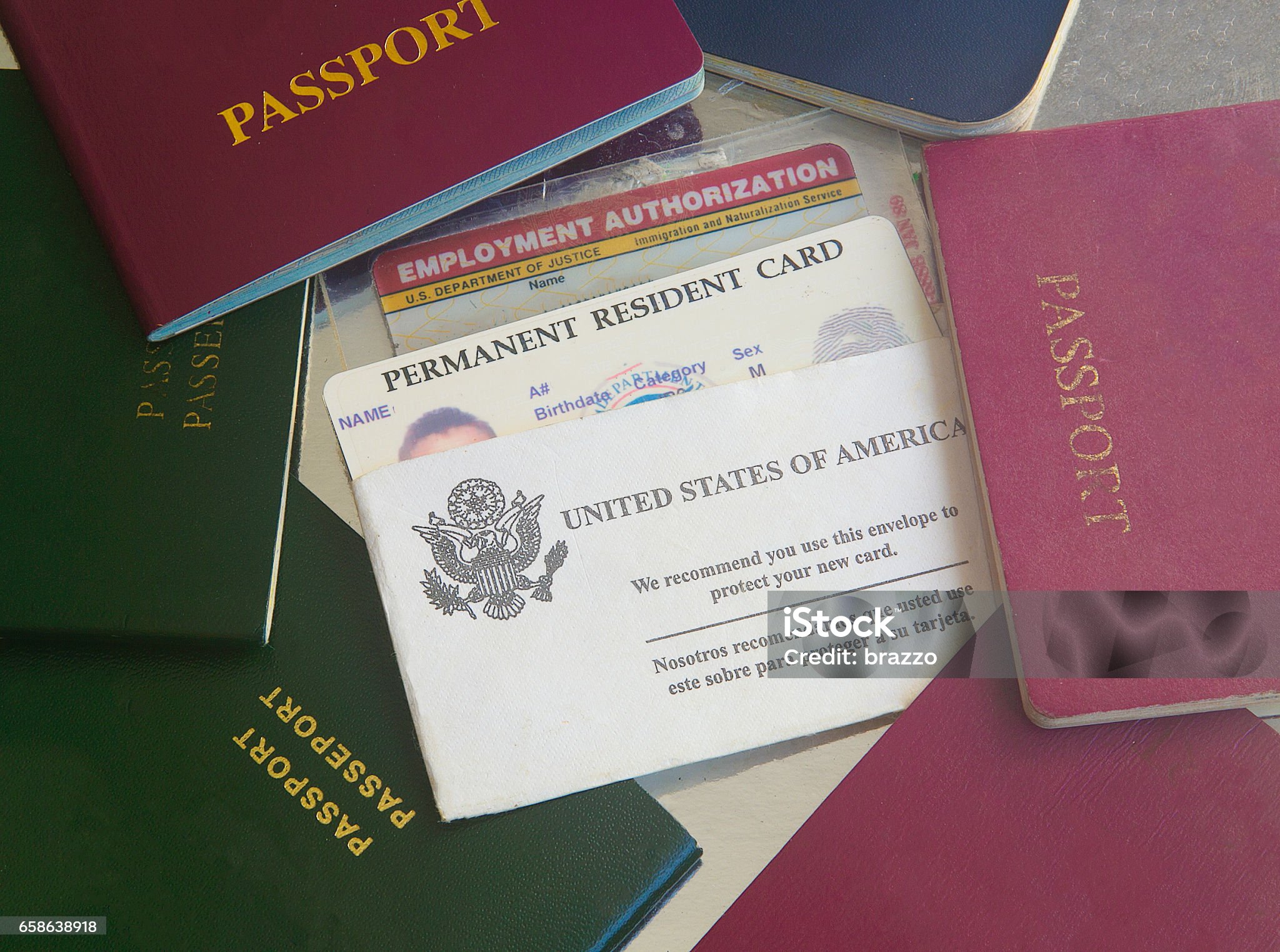Investigating the Future of ID Technology with Emerging Technologies for Global Use
Investigating the Future of ID Technology with Emerging Technologies for Global Use
Blog Article

1. Introduction to Identification Documents
Identification documents have significant personal and societal impacts. Serving as "permissions" and "access tools," these documents help society run efficiently when widely accepted and available. Various types of identification documents exist, each representing a distinct aspect or purpose. For example, a copyright is considered valid proof of the right to operate a car, and a copyright proves citizenship and allows entry into the country. Such documents hold significant personal importance and facilitate transactions such as employment, services, insurance acquisition, and car rentals. Many times, financial institutions might request to review these documents if the borrower seems untrustworthy or lacks a solid credit history. Such identification serves dual purposes: proof of identity and legal authorization for various activities.
Historically, identification documents were less central to everyday life than they are now. Their significance has evolved with the changing legal and security landscapes. Advances in information technology have made it possible for organizations to develop secure systems that are far ahead of the cutting-edge ID technologies available to the general public. Many countries are moving toward biometric technology to standardize their identification systems. Some already use electronic exit technology.
A person's identification documents are "proof" that signifies the legal status of an individual. The "real identification" recognized documents worldwide include passports, copyright, copyright, and driver's licenses, at both global and national scales. People often securely store their critical identification documents so that they can readily access them at a moment's notice.
In this discussion, we highlight the importance and authenticity of various documents, including IDP, Real ID, copyright, copyright, copyright, and resident permits, aiming to educate on their relevance. Both educators and the public should be familiar with these documents, as this information could prove valuable in safeguarding or recovering lost documents. The content here is directed at both domestic and international audiences, aiming to ensure they possess the vital documents necessary for their knowledge and ideals.
2. Legal Structures and Rules Overseeing Identification Documents
Identification documents are governed by laws and regulations that vary from one jurisdiction to another. These documents are given to individuals by issuing authorities following rules to ensure accuracy and authenticity. In some cases, identification documents are compulsory, while in other cases they serve as forms of verification or validation. The individual is obligated to adhere to the regulations of the jurisdiction where the document will be utilized. In conclusion, individuals must comprehend the legal rules that pertain to their intended use of identification documents within any jurisdiction where they expect to act. For the most part, state or local government agencies are responsible for issuing, regulating, and limiting specific documents for designated transactions.
However, jurisdictional identification requirements can sometimes create conflicts for those traveling or doing business internationally. It is, therefore, a global concern when people experience confusion or alienation when traveling internationally due to a lack of understanding of identification document rules. It would be impossible to list all of the rules for each country here, but it is important to know, that with nearly 200 countries and billions of global inhabitants conducting international trade and business, understanding identification requirements is vital. Failure to follow these rules may result in legal conflicts in foreign countries, where international reciprocity must then be considered. Failure to comply could cause legal implications, both civil and criminal, by infringing on laws about identity, privacy, commerce, trade, and human rights.
The balancing of public policies with protected rights can be complicated when establishing security standards for identification in travel. In some cases, human rights might clash with security policies requiring the highest levels of identification documentation in the fight against terrorism. Finally, within the last five years, because of the advent and recognition of using digital mobile driver licenses, countries have either clarified their laws on this or started to draft regulations and laws to govern their usage beyond just technology, which is a moving target. Digital identification documents for travel are being considered as the future direction for global travel management. Despite the shift towards mobile driver’s licenses, there will still be a requirement for passports for a significant period of time. 
Both the standardization and evolution of digital IDs and mobile driver licenses are continuing to develop. Take California as an example: roughly two years after the state passed its mobile copyright legislation, stakeholders are nearing agreement on the formal regulations for California's first mobile copyright.
3. Comparative Study of International Driver’s License, Real ID, copyright, copyright, copyright, and Resident Permit
The International Driver’s License is a document issued for people traveling internationally to drive legally. Neither the United Nations nor the International Non-Governmental Organization ever made the International Driver’s License to facilitate travel within a group of states.
The Real ID, is mainly used as a form of identification acceptable for boarding domestic flights, alongside state driver’s licenses and identification cards produced by states and territories following a national standard. In addition to domestic travel, the Real ID grants access to federal facilities and nuclear power plants. However, the Real ID is not meant to replace a travel document, copyright, visa, or residency permit. Even though some individuals could use it overseas for identification or birth date verification, its main function is for domestic use.
In the United States, passports are recognized as a primary identification document, unlike other derived forms of ID. A copyright is primarily used as a tool of foreign diplomacy; it was made to protect citizens from arrest or to help them travel and attend non-obligatory meetings to negotiate treaties or other matters of common concern. This is the copyright’s official and administrative purpose. Of course, the copyright can also be used for bureaucratic or private matters. In order to travel abroad, especially across state borders, but in some states inter-regionally, the traveler is required to not only hold a copyright but also fulfill additional conditions.
copyright are records issued at birth that serve as the basis for acquiring passports and other identification documents. When comparing the two, copyright and passports may seem to have the same general function. However, a copyright offers continued benefits. Additionally, while a copyright is used to acquire a copyright, it does not result in a “second copyright”. A copyright is irrelevant to obtaining a second copyright unless it involves taking on an illegal nationality.
4. Anti-Fraud Mechanisms and Security Features in Identification Documents
Several security measures are employed to safeguard against fraud, counterfeiting, and unauthorized tampering of identification documents. Many identification documents integrate security elements like holographic images, multi-layer visuals, and laser engravings to prevent fraud. Other cards may feature RFID chips that store digital images and biometric data.
Many security features are either hidden or semi-hidden, such as special inks, watermarks, or microtext. Such security features are put in place to make ID documents extremely hard to copyright or alter. 
Typically, the security level of an identification document is proportional to the level of trust it is expected to carry. For instance, a copyright doesn’t need the same high-level security features as a copyright, which is primarily used for international travel.
Advances in technology have driven the creation of more advanced security elements for ID documents. Actively promoting and adopting new security technologies helps keep one step ahead of potential fraudsters and counterfeiters by using up-to-date issuance practices.
Moreover, it is also important to continually evaluate existing and potential security features and issuance methods. This evaluation ensures that identification security systems remain strong in the face of new and advancing threats.
Furthermore, an effective anti-fraud document security program should focus on proactive as well as reactive strategies. Proactive measures can include workshops, public service announcements, educational outreach, and security conferences.
5. Summary and Future Developments in Identification Document Technology
This document provides a global overview of various types of identification documents across different countries. Identification documents must be examined from a technical angle, including security features and verification, as well as from a legal viewpoint concerning their legitimacy in courts.
My research shows different attitudes to the way a good document might be and how the value of copyright the verification tool is variable according to the circumstances of where the document should be used. It would also be interesting to examine through ethnographic methods how the definition of a “good” identification document varies by country. Comparison studies shed light on how identification document legitimacy can differ, even among countries with similar systems.
The future of identification documents is undergoing significant change, driven by advances in digital technology. Digital technology is helping to advance the functionality and security of traditional documents such as eIDs, keeping pace with mobile phone trends. Key developments in this technological shift involve biometrics and blockchain technology as part of secure identification systems.
Biometrics and its “liveness” function will capture biometric data during direct interaction with the enrolling authority, ensuring identity accuracy and reducing the risk of digital identity fraud. It will go beyond our basic human rights recognized by international law and several constitutions. Access to this biometric data needs to remain highly private and governed by the individual’s consent.
Digital identity systems may cause exclusion concerns, particularly for those who lack easy access to them. Not everyone is able to easily obtain a digital identity. Some already speak of an “identity gap” widened by technology, which creates disparities in access to identity verification needed for participation in various societal sectors.
There is a need for more systematic comparisons between digital identity systems and physical documents. So, apart from verifying identity, these databases are used to verify the risk levels for various transactions. There should be more systematic research to see how guaranteeing the “offline” verification rights can be applicable to this new identification context.